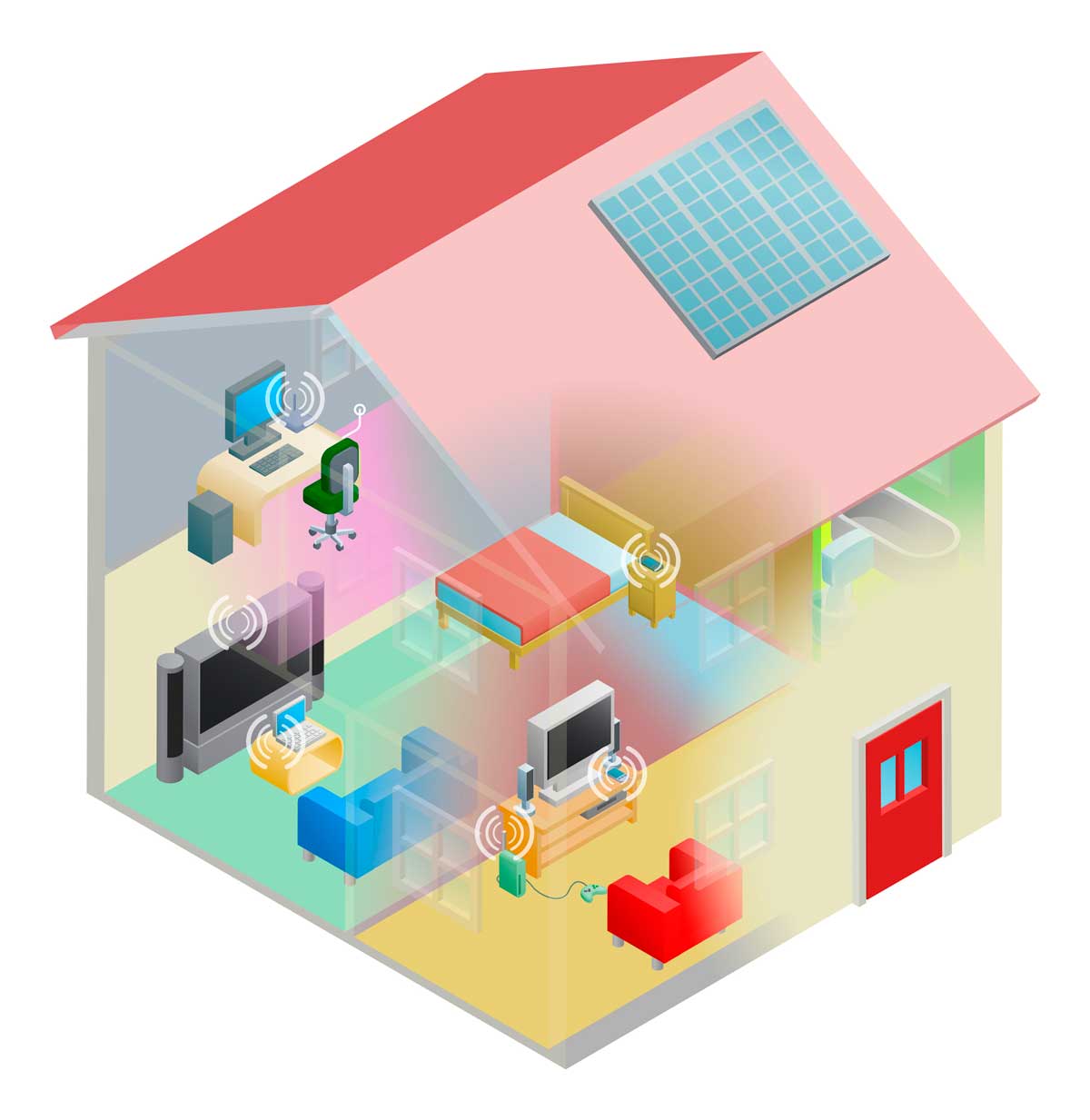Window Solutions
Window Tint/Film
Windows Blinds
Windows Shades
Window Solutions
Window Tint/Film
Windows Blinds
Windows Shades
Structured Wiring and Wireless Access Points
Our team at Technology Specialists are experts at home networking and home structured wiring. We offer both to help homeowners take advantage of the technological advances that are changing the way people live.
These complex topics often trigger a lot of questions for homeowners who are trying to figure out the best ways to incorporate technology into their homes. These answers to commonly asked questions about networking and structured cabling and wiring will help you make the right choices for your home.
Home networking connects two or more devices to a central point, such as a modem, which connects to the internet. Structured cabling and wiring refer to the infrastructure that makes home networking possible.
In order to network devices, you need to have a structured cable or wire system that features low-voltage wiring. Structured cabling and wiring allow you to do things like restart a TV show from a DVD in one room after starting it in a different room or use the same internet network with multiple computers and devices.
In order to take advantage of smart home automation, you need home networking in place. Some of the things you can do if you are using home automation include:
Home networking is also likely to become increasingly important as a feature when you sell your home. Buyers will be interested in buying homes with structured cabling and wiring already in place, so that they don’t have to go through the process of installing it after moving in. This demand will likely grow, and not having these systems in place may eventually impact the value of your home.

An Access Point connects directly to a wired local area network, typically Ethernet, and the AP then provides wireless connections using wireless LAN technology, typically Wi-Fi, for other devices to use that wired connection.
APs support the connection of multiple wireless devices through their one wired connection. For your most robust networking installs, Indoor and outdoor Access Points deliver the fastest speed on the highest number of devices. The latest technologies permit more devices to talk to the access point simultaneously, making it perfect for high-density networks with multiple wireless clients.
Home networking connects two or more devices to a central point, such as a modem, which connects to the internet. Structured cabling and wiring refers to the infrastructure that makes home networking possible.
In order to network devices, you need to have a structured cable or wire system that features low-voltage wiring. Structured cabling and wiring allows you to do things like restart a TV show from a DVD in one room after starting it in a different room or use the same internet network with multiple computers and devices.
In order to take advantage of smart home automation, you need home networking in place. Some of the things you can do if you are using home automation include:
Home networking is also likely to become increasingly important as a feature when you sell your home. Buyers will be interested in buying homes with structured cabling and wiring already in place, so that they don’t have to go through the process of installing it after moving in. This demand will likely grow, and not having these systems in place may eventually impact the value of your home.
The best way to know for sure if your wiring is capable of supporting smart home automation is to have a technician who does wiring and cabling work inspect your setup. He or she will determine what you need.
An Access Point connects directly to a wired local area network, typically Ethernet, and the AP then provides wireless connections using wireless LAN technology, typically Wi-Fi, for other devices to use that wired connection.
APs support the connection of multiple wireless devices through their one wired connection. For your most robust networking installs, Indoor and outdoor Access Points deliver the fastest speed on the highest number of devices. The latest technologies permit more devices to talk to the access point simultaneously, making it perfect for high-density networks with multiple wireless clients.
Licensed & Bonded
ROC# 285238
ROC# 306779
RESIDENTIAL SERVICES
COMMERCIAL SERVICES
HOURS
Monday - Friday
8 am - 5 pm
SPEEDWAY
4418 E SPEEDWAY BLVD
TUCSON, AZ 85712
(520) 784-2500
AUTOMALL
4351 N FAIRVIEW AVE
TUCSON, AZ 85705
(520) 784-2500
SIERRA VISTA
999 E FRY BLVD SUITE 203
SIERRA VISTA, AZ 85635
(520) 784-2500